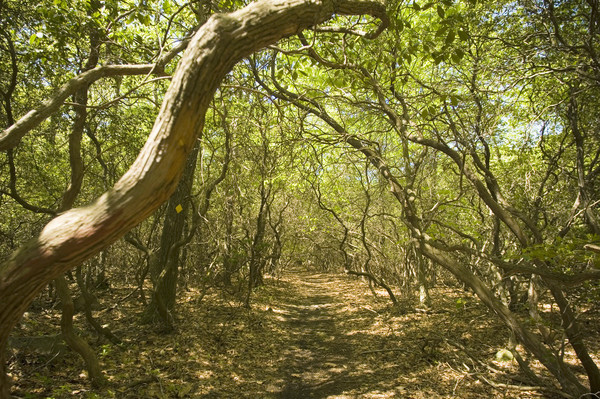While we continue to fight to protect the remaining 236 acres of Oswegatchie Hills from development, here’s a peek at recent archeological discoveries in the adjoining Oswegatchie Hills Nature Preserve (OHNP) in East Lyme.

Ask someone who grew up in East Lyme for their favorite memories and most likely there’s a tale about the Oswegatchie Hills, a rugged coastal forest above the Niantic River tidal estuary of Long Island Sound. It’s often stories of secretive hikes through the hilly terrain, then owned by local families; or winter bonfires and ice-skating parties on Clark Pond, long before the Town of East Lyme preserve was established in 2007.
As with many areas in New England, there is a much older history in the Hills too. Professional, academic, and amateur archeologists have turned up tantalizing fragments of what life would have been like for Native Americans, Colonial settlers, and Revolutionary War communities. Signs of early-1800s rock quarrying activity are obvious, but little more than old photos exist of ice harvesting operations on Clark Pond from the 1880s to early 1900s.

East Lyme High School’s (ELHS) anthropology classes have been conducting research in different parts of the Oswegatchie Hills Nature Preserve (OHNP) since 2013, sharing their findings with the Friends of OHNP, East Lyme’s town historian and the state archeologist. The classes include field excavations, laboratory research to identify and date objects, searching through old town records and deeds and studying what was going on in southeastern Connecticut during the time period.

The first digs brought together students and Native American tribal archeologists to see if some disturbed areas were sites of Native American shelters and hunting tools. But little history could be determined. More recently, the students unearthed what they believe to be a hearth of a Colonial-era house. According to archeology experts, the amount of everyday materials and bits of charcoal found indicate that this was someone’s home sometime in the late 1700s to early 1800s.
Wil Reed, East Lyme High School anthropology teacher, says the process of digging through this refuse made the students feel like “artists of searching junk” to uncover information about life long ago. At this site alone, more than 100 pieces of materials, clues of this past human life, have been found and cataloged. These include shoe buckles and a metal ox shoe, similar to a horseshoe; a knife and fork; and clay pipe stems and half of a tobacco pipe bowl. An unearthed King George II copper penny can be dated to 1740 because of the direction of the king’s profile.

ELHS student Ella Page holds two Colonial-era shoe buckles found in OHNP. 
Students catalogued and sought to identify pieces, including the King George II penny (lower left-hand side, third row up).
The students also found shards of ceramics and green glass that they determined came from onion glass bottles, named after the shape of vessels. “These blown glass bottles were kind of the Portuguese Tupperware of the world,” says Reed. “They were highly datable to the 1700s and 1800s, and could have been used to transport whiskey on ships.”
What is perhaps the most perplexing is the fate of the house and its occupants. Town records from 1854 no longer list a house, and photos from 1920 show no signs of a building footprint. “It doesn’t appear to have been a multi-generational home; it was here for a certain time period, and then gone,” says Reed.
The students theorized that the building could have been a “plague house,” isolated living for people with deadly communicable diseases. Smallpox and tuberculosis swept through the area in the early 1800s, according to chronicles of Dr. Vine Utley, a country doctor who practiced in what is now East Lyme. Sick houses were often burned down in attempts to stop diseases. More happily, perhaps the residents moved on in pursuit of the 1820s Georgia gold rush, or maybe a single man lived there and left to seek his fortunes on the seas.

The students’ finds and journals will become part of the historic records of the Oswegatchie Hills Nature Preserve and contribute to ongoing and future archeological studies of the area.
Hiking through the forested Oswegatchie Hills today, one wonders how many other hidden treasures lie under the forest floor, waiting to tell us about our past. All the more reason to protect and preserve increasingly rare open space and undeveloped land for future generations!
See more about Oswegatchie Hills Nature Preserve.
Learn more about how you can join in our efforts to save the remaining Oswegatchie Hills.
